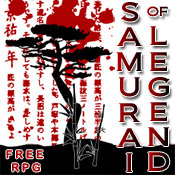The Pentagon's unusual five-sided shape was dictated by the site originally proposed (adjacent to Memorial Drive, about three-fourths of a mile north of where the building was actually constructed). An early plan called for a square structure with one corner cut off to accommodate an existing road. This resulted in a skewed Pentagon shape. Serious objections were raised to locating the building on open land directly between Arlington Cemetery and Washingtons Monumental Core, and discussions ensued regarding selection of a building site resulting in less visual and physical impact from the project. During the debate on the site, the project's chief architects, George Edwin Bergstrom and David J. Witmer, continued to refine the design. The final design retained the five sides, in the form of a true pentagon, which gave rise to the building's name. That shape resulted in the most efficient use of available space. The concept of using several concentric rings to contain the space evolved during further refinement of design. Preliminary design and drafting took just 34 days. A project of this magnitude and urgency demanded the rapid assembly of an unprecedented design and production effort.
The office of the chief architect rapidly grew to 327 architects and engineers who were supported by 117 field inspectors. The weekly output of prints ranged from 12,000 to 30,000 with reproduction machines running on a 24-hour basis. For periods of time, new drawings were issued nightly. The reproduction effort consumed 15,000 yards of print paper per week.
Construction began on September 11, 1941, and was completed on January 15, 1943. At one stage of construction, 15,000 people were employed on the job working three shifts, 24 hours a day. At night, they worked under floodlights. Construction took just 16 months, a remarkable feat of engineering and management.
The Pentagon building is composed of five concentric pentagonal rings connected by ten radial corridors. Each of its outer walls is 921.6 feet long. The building covers 29 acres, the largest ground area of any office building in the world. A five-acre pentagonal courtyard is located in the building's center. The building and its central courtyard cover 34 acres. There are 17.5 miles of corridors in the building. The structure is three times the size of the Empire State Building and 50 percent larger than Chicago's Merchandise Mart. The building rests on 41,492 concrete piles, the combined length of which would stretch 200 miles. The five concentric pentagonal rings are separated by interior courts which serve as light wells. This design feature increases the number of windows allowing natural light. Each ring has five stories. The Mall and River sides of the building have a basement area which includes a partial mezzanine. The innermost and outermost rings have sloping slate roofs, while the other three rings have flat, built-up roofs. The rings are connected at each floor level by a series of ten radial corridors extending from the A ring (innermost) to the E ring (outermost).







